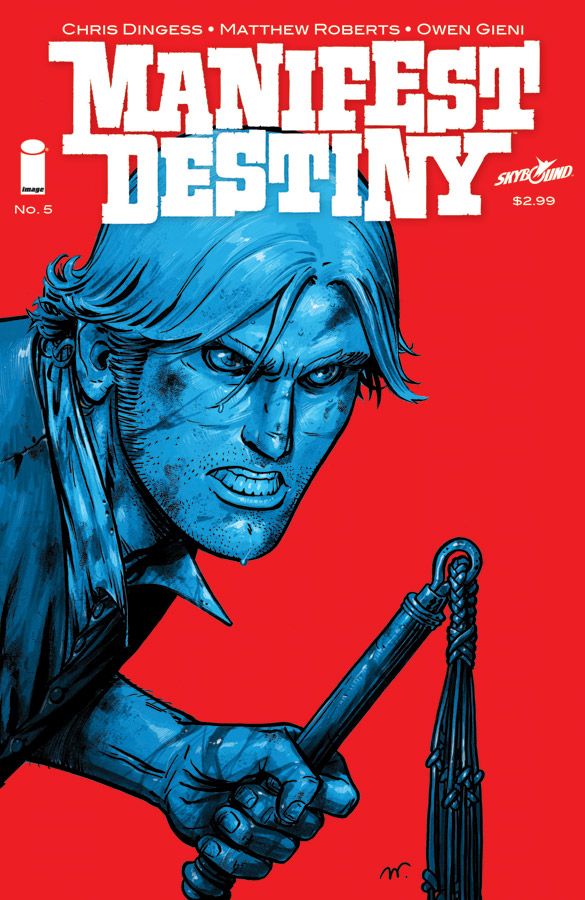According to Chris Dingess and Matthew Roberts, Lewis and Clark's famous expedition into the Western United States was a whole lot more mythical than the history books purport. Indeed, "Manifest Destiny" has seen the famous explorers encounter creatures as bizarre as (loosely defined) buffalo minotaurs and zombie-like flora-infested settlers. In its fifth issue, the series takes the entire crew into the forest in an attempt to eliminate these threats to Western settlement. Between Dingess and Roberts, our protagonists get thrown into a thrilling, adventure-filled romp through the American wilderness with engaging character work and well-paced humor.
I didn't have much background knowledge by way of Lewis and Clark's story going into this book; however, as the two explorers are almost mythological beings themselves, it's difficult to go through an American education without having some acquaintance with their story. That said, I was pleasantly surprised to discover Lewis and Clark's distinct personalities within the context of this series, as opposed to their rather flat representation in your standard history textbook. Dingess does fall back on cliche in terms of their development, seeing Lewis as the fervent academic type counterbalanced by Clark's machismo, but this works in their favor here. In this framework, Lewis's journal-entry form of narration feels conversational, organic and filled with purpose; his zeal makes him fearless in the face of danger, driving him to deliberate and justified action. On the other hand, Clark plays off this as the aggressive, duty-driven captain, commanding his ragtag army with an iron will. The two have excellent chemistry, working off one another to provide naturalistic exposition and to arrive at informed positions in regards to the crew's next course of action.
Additionally, Lewis' narration provides Dingess and Roberts with ample fodder for dramatic irony, which they use to its best extent. Where Dingess lays out Lewis' interpretation of events in the journal entries, Roberts shows the scene as it happened in the same panel, inserting some subtle but effective humor into the issue as a whole. For instance, as Lewis hopes that the women find his quarters comfortable, Roberts inserts a panel that shows one of them warily eyeing the pickled heron in his cabin. Dingess and Roberts also slip in other funny little moments in less subtle ways, such as Clark's discovery of a crate filled with stakes in the ship's underbelly. While the humor may not be of a "laugh out loud" variety, it certainly warrants a chuckle and gives the book its fun atmosphere.
Roberts' work with the flora-infected is, hands down, the best part of this issue. He incorporates miniscule detail into every figure for a deliciously creepy effect, replacing veins with ivy-like tendrils and gill-like fungus on each zombiesque monster. Ultimately, it manages to capture the spirit of gore without being oppressively gory in and of itself. Owen Gieni strengthens this effect with the use of a particularly neon green for the eyes of the infected. What's more, the sheer amount of these figures is impressive in its own right; the fact that each is its own unique monster underscores Roberts' time and effort. This comes, of course, in addition to his gorgeously wrought forest scenes. Each panel is meticulously done, with distinct character work and intricate backgrounds.
With more action and raised stakes, "Manifest Destiny" #5 contributes neatly to Dingess and Roberts' bold, spirited series.

